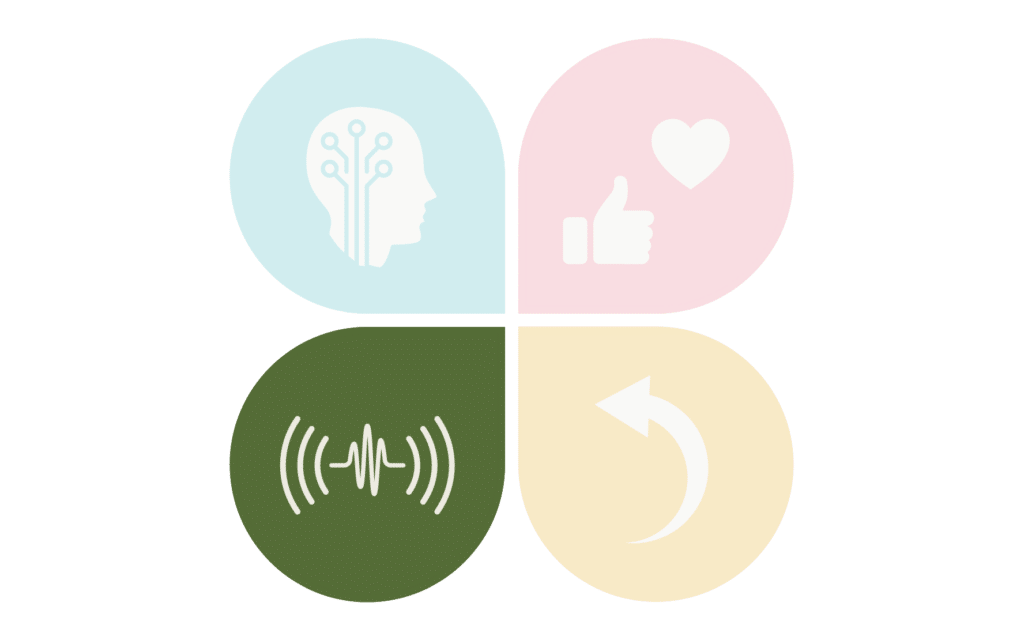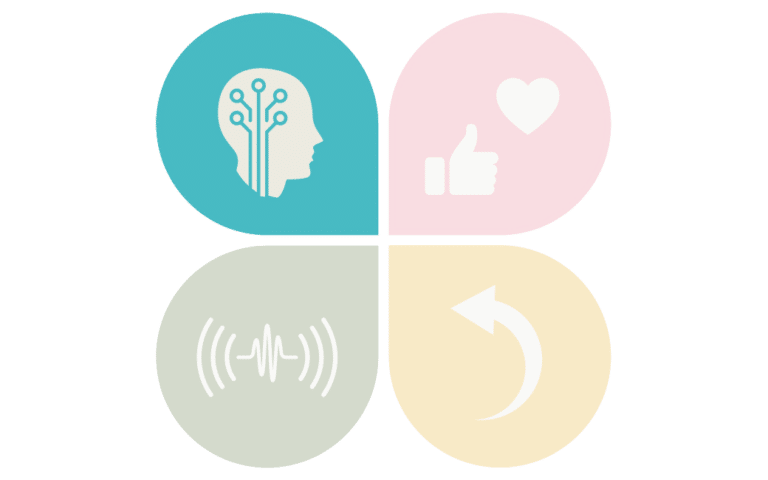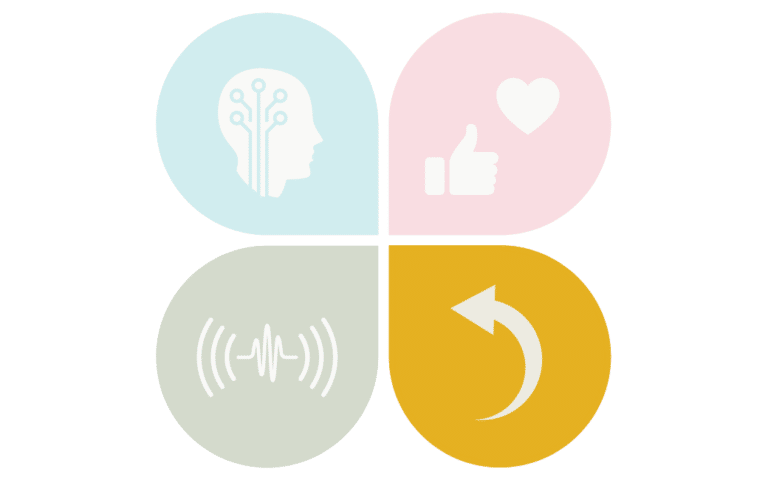How to Stay Relevant Across Paid, Owned, and Earned Channels
2023 Marketing Trends + Insights
It’s time to tune in your strategies, amplify your brand voice, and reach new audiences.

When growing and managing a brand, staying on top of ever-evolving paid, owned and earned channels can feel like a game of Whac-a-Mole. Messages must shift to reflect consumer trends, different platforms speak to different audiences, and remaining relevant can be a full-time task. Successful brands understand that continual audience and data mapping are vital to keeping in tune with (and connected to) multiple audiences across numerous media channels.
Agile Marketing
Modern marketing is constantly evolving and shifting at a rapid rate. Succeeding in this environment requires a strategy to match. Enter agile marketing. Initially introduced as the methodology to revolutionize software development, Atlassian describes agile marketing as “breaking down work into small increments, gathering continuous feedback, and allowing flexibility to adapt to changes.”
Specifically, a successful agile marketing team will include the following:
- Agile-based teamwork (i.e., replacing silos and hierarchy with free collaboration).
- Data-driven decision making.
- Springs that result in releasing iterative work more rapidly.
By focusing on this cross-functional, collaborative and flexible approach to teamwork, marketing teams often find their speed and productivity increase. No longer are projects bottlenecked with a specific group or individual, and the team’s overall process is significantly more transparent, meaning everyone is held accountable and provides more autonomy. Plus, by rooting all decision-making in data, there are clearer measures for success, and experimentation can be managed on a smaller, more implementable scale that won’t have catastrophic impacts on a larger campaign.
Your employees will be one of many ones taking notice of the shift to agile, too. Deloitte’s 2021 Global Marketing Trends report found that 58 percent of people remembered a brand that swiftly pivoted to respond to consumers’ needs, and 82 percent ended up doing more business with that company as a result. A key example of this is DoorDash’s 226% gain in revenue from 2019 to 2020, spurred partly by the spike in food delivery demand during the pandemic but bolstered overall by the brand’s lightning-fast response to consumer needs from the start.
Influencer Marketing
Influencer marketing isn’t going anywhere – as covered in our article on how the world uses social media. Influencer marketing is booming and is expected to become a $27 billion business in three years. While this can be a labor-intensive approach for your brand, the benefits of influencer marketing can be worth the investment: influencer marketing can lift your brand’s visibility and authority in your industry, resulting in authentic relationships with consumers and improved brand awareness overall.
Many brands dip their toes in the influencer marketing waters by starting with user-generated content (UGC). It’s a less-expensive alternative to influencer partnerships and a great way to implement organic, trustworthy content into your outreach strategy. More prominent brands may go all in with a combination of UGC, content creator campaigns, and influencer partnerships. Whichever path you pursue, introducing some form of this content is all but necessary in 2023 – while only 38 percent of consumers trust recommendations made on social media platforms by bands, 61 percent are likely to trust recommendations made by an influencer.
(P.S. If your brand wants to implement this, but the startup process feels overwhelming, consider reading our article on influencer marketing agencies and how they can help your brand create – and manage – a successful influencer marketing strategy!)
Paid, Owned, Earned Media
Paid, owned and earned media make up most of a brand’s marketing mix, but what’s the difference between them? Simply put, “Paid media is content you pay to place in front of an audience as an ad or sponsorship, while owned and earned are free. Owned media is content you create and control, like your Facebook page or website, while earned media is content others create about you, like reviews or Instagram posts.” As Forbes explains, “Optimizing paid, earned and even owned media begins with understanding each channel’s strengths and weaknesses.”
They continue, “Start by analyzing the brand’s specific situation. Based on this analysis, brand teams can build a strategy that combines the strengths of different media types, positioning them to complement each other for the benefit of the brand.”
Utilize paid media to build brand awareness, as this channel has the advantage of putting your brand in full control of messaging and placements as quickly as possible. To foster credibility and authenticity, incorporate earned media (such as UGC and influencer marketing) – though be aware this will take time to cultivate. Fill the gap between ‘fast but viewed as less authentic paid media and ‘genuine but slow to develop’ earned media with owned media: your brand’s social media channels and website.
Data-Informed Brand Development
Never before has data been more crucial to a brand’s success and its story development. Thankfully, in many ways, data is more accessible than ever before. For example, predictive analytics, made possible by A.I., allows marketers to pull together data that was once disparate. This means brands can “anticipate demand, optimize segmentation, improve experiences and foster brand loyalty.”
This can be incredibly influential in identifying which top-of-funnel tactics to implement to increase customer awareness. Optimizing your brand’s efforts at the top of the marketing funnel can mean generating more leads, attracting more customers and carefully crafting your brand’s credibility with audiences that matter most.
Mid-funnel marketing tactics, too, can be positively influenced by data. By increasing your understanding of your customer’s values, pain points, and other factors influencing their decision-making, you can better position your brand to align with and resolve those elements. Acknowledging common questions they have about your product and what factors they consider when choosing between you and a competitor can have a profound impact on your ability to drive consumers through your marketing funnel.
Conversational A.I., including chatbots, is also playing a growing role in how we collect these kinds of data. While the future of this technology, its applications in the world of marketing, and the ways it will change how consumers engage with brands remain to be seen, at Ideas Collide, we remain cautiously optimistic about these trends and, for our part, we are already investing in the AI-powered future and chat A.I. with our partner, Botco.ai.
Data Clustering
Segmenting customers has long been a challenge for marketers. While it’s impossible to survey every single customer a brand has, it’s also important not to overgeneralize sentiments and combine similar groups that ultimately differ wildly in their tastes or motivations. That’s where data clustering comes in.
Optimove explains, “Cluster analysis uses mathematical models to discover groups of similar customers based on the smallest variations among customers within each group.” In layman’s terms, it’s the development of brand personas. Each persona contains customers that are very similar to one another but significantly different to customers in other personas. Brands use data clustering to map out many customers on a graph and identify these key personas as they are observed in the data analysis.
Semrush, HubSpot, and Xtensio each have tools to help brands identify their specific personas, but for brands eager to dive deep into their customer segmentation and mine detailed, long-term insights from the data, we recommend working with an agency to not only find your personas but implement accurate campaigns to appeal to each of them.
We’re Here For You
The best games of Whac-a-Mole were the ones with two mallets: where you and a partner could work together to tackle the ceaseless appearances of those volatile varmints. Let Ideas Collide be the Player 2 to your Player 1 in the ever-evolving world of paid, earned, and owned channels. Drop us a line and learn how we can help your brand grow, starting today.
Optimizing paid, earned and even owned media begins with understanding each channel’s strengths and weaknesses.
Like what you see?We’d love to work with you.
Contact UsTrends + Insights

2023 Trends + Insights: How Companies Are Leveraging AI in Digital Marketing
The AI tools every marketer should know, and four ways they’ll change how your company works forever.

2023 Trends + Insights: Why In-Store Experiences Thrive in Post-Pandemic Economy
It should come as little surprise that in-person experiences seem all the more poignant in our post-pandemic world.

Meet the New Social Media Darlings, Part One
Part 1: Evolution of Social Media. The Rise of Entertainment Apps. Platforms are adapting to maximize entertainment and foster creativity.